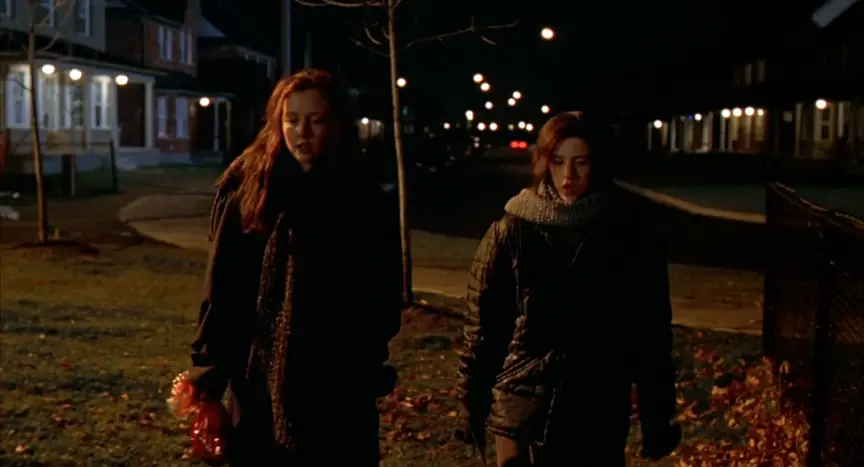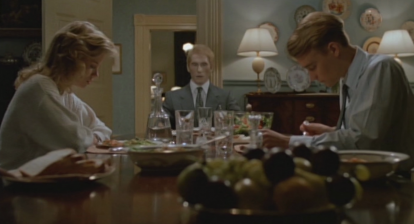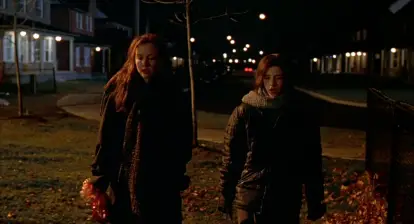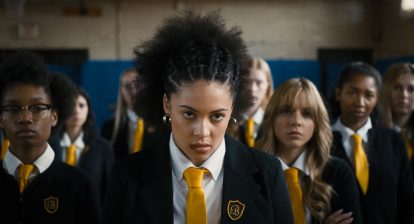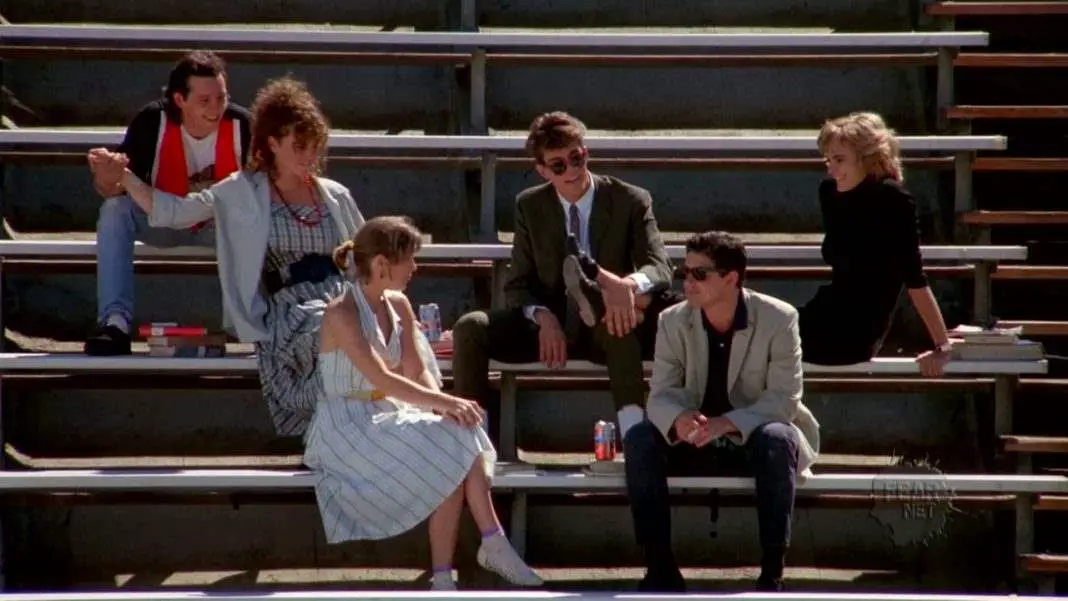Ginger Snaps–as I’ve written about here–is one of the best horror movies of the past fifteen years, period. It’s among the great werewolf films of all time. Yes, it was independent and low budget, but like some of the best horror films of our time, that proved to be a help and not a hindrance. The film showcases an impressive use of the werewolf mythology as a metaphor for female adolescence and growing up. It tells the story of two inseparable, death-obsessed sisters, Ginger and Bridgette. They don’t have anything they care about, other than each other. But that changes with the onset of Ginger’s menstrual cycle—and she also gets bitten by a werewolf around the same time.
It’s a funny movie, with genuine scares, but most importantly the characters are authentic and sympathetic. There’s a preconceived notion that more women are attracted to the horror genre now, that the female audience has grown. I don’t think that’s totally the case, because women have always been a part of the horror audience—if anything, I think they’re simply more vocal now.
The major shift of the past fifteen years is that movies started being made for a female audience. While women may have always been a part of the genre, the films were made by and large to cater to a male audience. Things have changed now. Ginger Snaps didn’t just pave the way for newer and more interesting werewolf features, it paved the way for titles like May, Grace, Teeth and American Mary.
This one movie did a lot for the genre, and it was more than allowing for more werewolf features to happen. There has been a rise in feminist, female-centric horror in the past decade and much of that can be traced back to Ginger Snaps. It proved that there was an audience for feminist horror. I don’t think people suddenly wanted to make horror for a female audience after Ginger Snaps, the desire was there before, but Ginger Snaps proved it could work and be successful. The higher-ups typically only care if something is profitable or not. They’re not usually interested in the meaning, in why the artist feels compelled to make the film, they’re interested in the numbers.
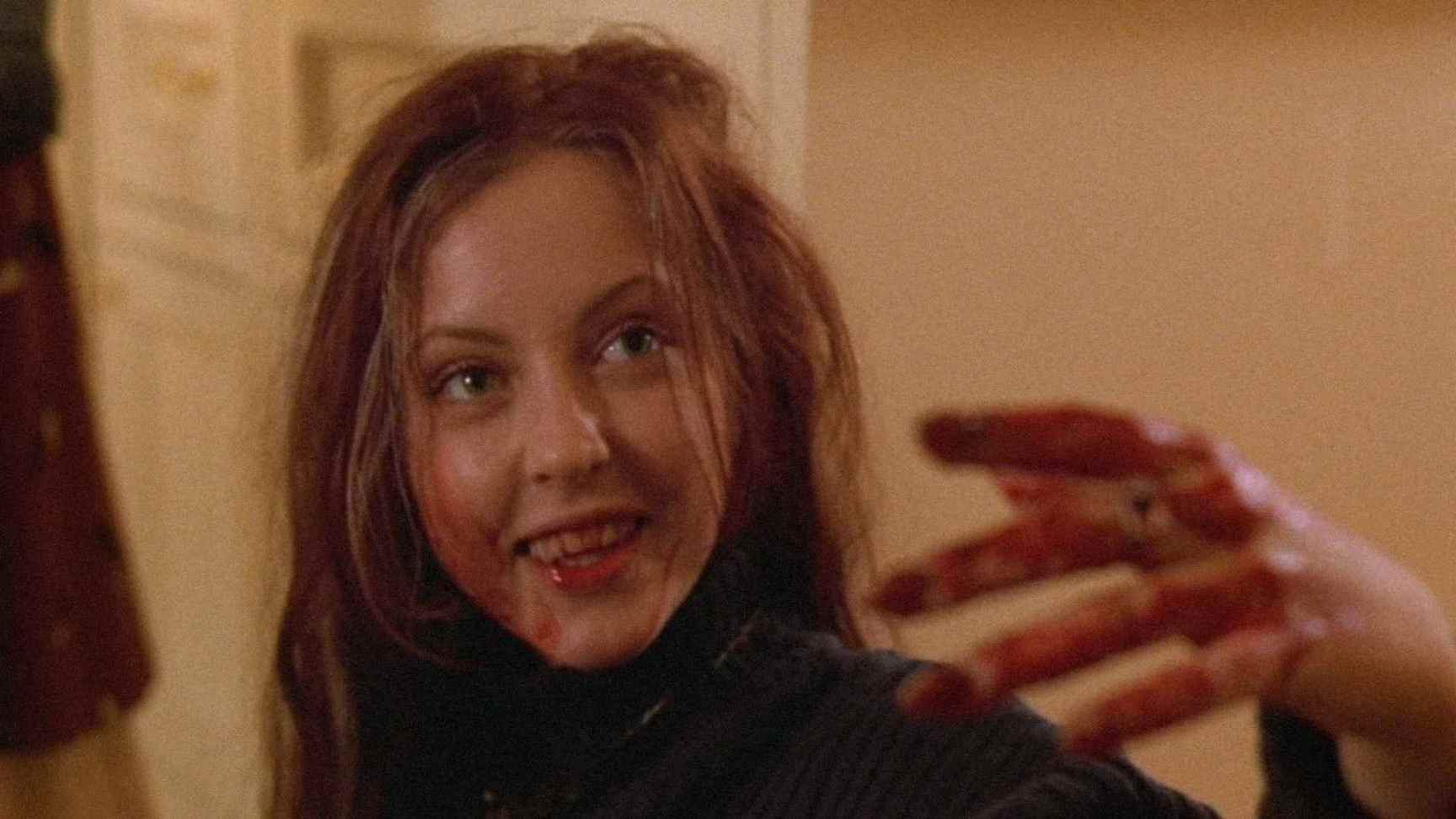
Despite Ginger Snaps’ very limited release and its small budget, the numbers were good. It was a major hit on video and even spawned two sequels: Ginger Snaps 2: Unleashed and Ginger Snaps Back: The Beginning. It led to other major werewolf hits like Neill Marshall’s Dog Soldiers, which was made around the same time, but picked up for distribution by the SyFy Channel in 2002. On a larger scale, Wes Craven’s 2005 film Cursed feels like a big-budget attempt to recreate Ginger’s success.
The legacy of Ginger Snaps is so strong that the movie feels as though it could have been made yesterday. That’s the number one sign of success for something like this. Most films age terribly, that’s why modern audiences are always so reluctant to look back at the films of the generations that came before them. Older movies look, well…old. There are very few features that truly hold up over time, strictly on a visual level. There are of course plenty of other elements to enjoy for modern audiences if they are willing to overlook those things.
Ginger Snaps doesn’t look like a big budget movie, but it doesn’t need to. It’s still well shot and the acting from both Katharine Isabelle and Emily Perkins is brilliant. The script is genius. Ginger Snaps holds up. The least impressive thing about it is the look of the werewolf, which is still interesting, just a little more ambitious than what the budget allowed for. But if your werewolf film works despite that, then you know it’s great. I don’t know if enough time has passed to say that Ginger Snaps is a classic, but it is certainly on its way.
Ginger Snaps rejuvenated the werewolf genre, which was on life support in the 1990’s. It proved that in 2000, a movie could still be a hit on video and find an audience even if it was unconventional. With that in mind, its indie success might have set the distribution model for its decade. But the most important thing about Ginger Snaps was that it proved a female voice at the heart of a horror film was something people actually wanted to listen to. It wasn’t just horror for a female audience, it was female horror. The genre has been steadily improving in that area ever since, and there’s no better legacy for a film to have than that.
